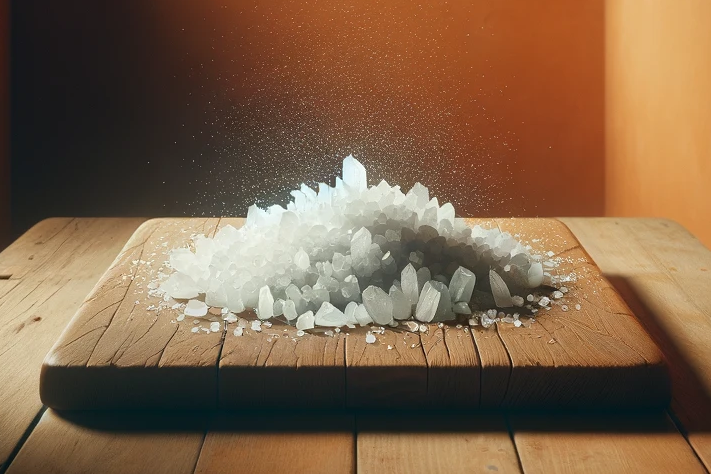Iron(II) acetate

Iron is an essential mineral that plays a key role in our best friend's diet. But when it comes to ferrous acetate, a specific salt of iron, many dog owners are baffled. In this article, we dive deep into the world of ferrous acetate to unravel its mysteries and understand how it can affect the health and well-being of our dogs.
What is ferrous acetate?
Ferrous acetate, also known as ferroacetate, is a chemical compound that is formed when iron reacts with acetic acid. It is one of the many iron(II) salts and is used in a variety of applications, from coloring fabrics to being used as a wood preservative. However, its role in nutrition, particularly in dog nutrition, is less well known and often underestimated.
The importance of iron for dogs
Iron is a crucial mineral that contributes to the formation of hemoglobin in the blood, a protein that transports oxygen from the lungs to different parts of the body. Without enough iron, your dog could develop symptoms of anemia, including weakness, paleness of mucous membranes and decreased stamina. Iron is also necessary for healthy immune function and DNA synthesis.
Benefits of ferrous acetate in dog nutrition
Iron(II) acetate offers potential benefits for dog nutrition due to its specific chemical properties. Here are a few to mention:
Improved iron absorption
Compared to other iron compounds, ferrous acetate could be more easily absorbed, resulting in more efficient utilization and less likelihood of iron deficiency states.
Supporting blood health
By providing a bioavailable source of iron, ferrous acetate helps support the formation of hemoglobin, which is critical for oxygen transportation in the body.
Strengthening the immune system
Iron plays a role in the function of the immune system. An adequate iron supply can help to strengthen your dog's natural defenses.
Possible disadvantages and risks
Despite the benefits, there are also potential disadvantages to using ferrous acetate in dog nutrition:
Overdose risk
Excessive intake of iron, including ferrous acetate, can lead to iron overload, which can cause organ damage. Symptoms of iron overdose include vomiting, diarrhea, lethargy and in severe cases even death.
Interactions with other nutrients
Iron can interact with other minerals such as calcium and zinc and impair their absorption. A careful balance of nutrients is crucial.
Limited studies
There is limited research on the specific effects of ferrous acetate in dog nutrition, making it difficult to assess its safety and efficacy.
Ferrous acetate could be a valuable source of iron in your dog's diet, especially when it comes to improving iron absorption and supporting blood health. However, as with any nutrient, it depends on the correct dosage and balance in the diet. Overdosing and interactions with other nutrients are important considerations that should not be overlooked.
If you notice any signs of hypersensitivity or poisoning in your dog, you should see your vet immediately. We are not a substitute for a vet, but we try to be as accurate as possible. Every dog reacts differently and we recommend you get a second opinion or consult your vet if in doubt.
Stay healthy and take good care of your four-legged friend!😊
Similar to Iron(II) acetate
Iron(II) chloride, also known as ferrochloride, is a chemical compound with the formula FeCl2. It is one of the two iron chlorides and is characterized by its greenish-yellow color in hydrated form...
Iron is a key element in the production of hemoglobin, a protein in red blood cells that is responsible for transporting oxygen from the lungs to the body's cells. Without enough iron, your dog...
Iron(II) sulphate, also known as ferrous sulphate, is a chemical compound that is mainly used as an iron supplement in animal nutrition. It is a salt consisting of iron ions in the +2 oxidation...
Iron(III) chloride, also known as ferric chloride, is a chemical compound with the formula FeCl3. It is an inorganic salt that occurs both in anhydrous form and as a hydrate. This substance is...



